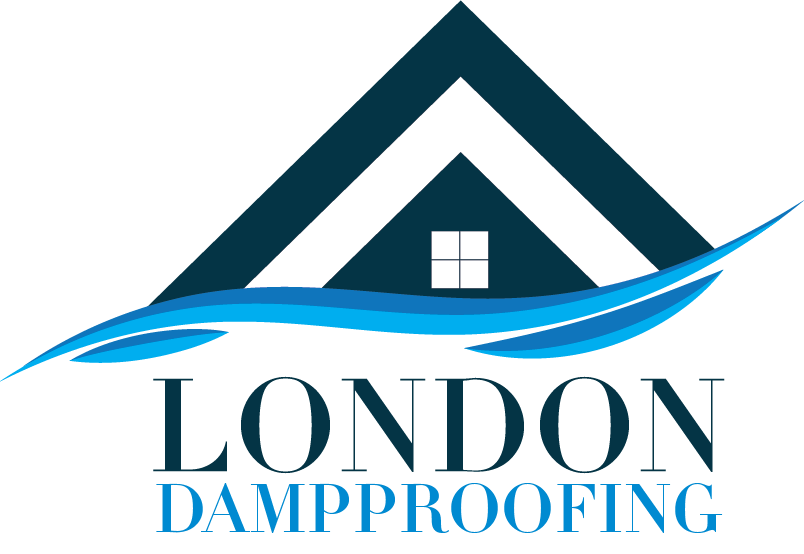At London Dampproofing, we understand how devastating dry rot can be to your home. It’s not just unsightly; it’s a silent structural threat that can undermine the very integrity of your property. As specialists in dry rot treatment, damp proofing, condensation control, and more, we’re committed to protecting your investment, one treatment at a time.
Whether you’re dealing with suspicious cracks in your timber or you’ve already been told you have dry rot, this comprehensive guide will walk you through everything you need to know. From understanding what dry rot is, to recognising the signs, learning about its causes, and, most importantly, how to eliminate it, we’ll cover it all.
In this blog, we’ll also explain exactly how London Dampproofing can help you take back control of your property with expert, efficient, and affordable services. So, let’s get to the root of the problem. Ready to book your dry rot treatment? Contact us today!
What is Dry Rot?
Dry rot, scientifically known as Serpula lacrymans, is a type of wood-decaying fungus. Unlike what its name suggests, dry rot thrives in damp environments. It attacks timber, stripping it of its natural strength and flexibility until it becomes weak, brittle, and crumbly.
What makes dry rot particularly dangerous is its ability to travel through materials other than wood, such as masonry and plaster. This means that an infestation can spread quickly and quietly throughout a property if left untreated.
Dry rot begins as microscopic airborne spores. These spores lie dormant until they encounter timber with a moisture content of over 20%. When that happens, they germinate and form mycelium, a white, cotton-wool-like substance. Mycelium invades the timber, feeding on it, and eventually develops into a sporophore, the fruiting body that releases even more spores.
If you’re dealing with dry rot, time is of the essence. The longer it’s left untreated, the more damage it can cause, not just to timber but to the entire structure of your home.
What causes dry rot?
Dry rot needs three main ingredients to grow: wood, moisture, and oxygen. When all three are present, the fungus thrives, especially in damp, poorly ventilated areas. Understanding the root causes can help you prevent outbreaks before they become serious. Common causes of dry rot include:
Leaking pipes or plumbing faults
Even minor leaks behind walls or under floors can raise the moisture content in timber. Over time, this creates the perfect environment for dry rot spores to germinate and spread.
Roof damage or faulty gutters
Broken or blocked gutters and cracked roofing allow rainwater to seep into loft beams and rafters. This undetected water ingress can go unnoticed for months, providing the moisture for dry rot needs to take hold.
Poor ventilation in basements, lofts or crawl spaces
Areas with limited airflow often suffer from trapped moisture. Without adequate ventilation, the humidity remains high, which supports fungal growth on timber structures.
Condensation build-up
Persistent condensation, especially in kitchens, bathrooms, or utility rooms, can soak into nearby wooden fittings. If not addressed, this moisture can eventually trigger dry rot outbreaks.
Flooding or water ingress from outside
Surface water or flood damage can drench timber subfloors or lower wall areas. If the property isn’t dried out thoroughly, moisture levels stay elevated long after the floodwaters have gone.
Rising damp that is left untreated
Moisture from the ground can rise up through porous building materials. If rising damp is ignored, it keeps timber at a high moisture content, ideal for dry rot to thrive.
Once moisture seeps into timber, the spores settle and start their lifecycle. Over time, this leads to a structural infestation that can travel behind walls and beneath floors, often undetected until it’s too late. That’s why identifying and eliminating the source of moisture is just as crucial as treating the rot itself.
Signs of Dry Rot
Recognising the early signs of dry rot is crucial for limiting the damage and reducing the cost of treatment. Here’s what to look out for:
- Large cuboidal cracks in timber
These square-shaped splits are a tell-tale sign that the wood is drying out and losing its integrity.
- Shrunken, brittle, and crumbly timber
Wood that crumbles to the touch or sounds hollow may already be affected.
- A musty, damp odour
Dry rot often produces a distinctive earthy smell.
- Mycelium growth
A white or grey, cotton-wool-like substance on the timber.
- Fruiting body (Sporophore)
This looks like a fleshy, pancake-shaped mushroom with a rust-red centre and pale edges.
- Darkened timber
As the rot progresses, the wood darkens unnaturally.
- Bouncy or uneven floors
Floorboards that shift or feel unstable may indicate weakened timber underneath.
- Skirting boards pulling away from the wall
A sign that structural integrity has been compromised.
If you notice any of these symptoms, contact London Dampproofing immediately. Early action can save you thousands in repair costs.
Why Dry Rot Treatment is Vital for Your Home’s Structural Integrity
When it comes to dry rot, prevention and prompt treatment are critical. Unlike cosmetic issues, dry rot compromises the actual framework of your property—its timber. Left unchecked, this destructive fungus can cause severe structural failure, leading to repairs that are not only extensive but also incredibly costly. Acting fast is your best defence, here’s why you should never ignore dry rot…
1. Structural Instability
Dry rot doesn’t just damage the surface—it attacks the core of timber, stripping away its strength and density. This means once-sturdy beams, joists, and supports can no longer bear weight effectively. In homes where dry rot is left untreated, this often results in collapsing floorboards, sagging ceilings, unstable staircases, and, in some extreme cases, partial structural collapse. The very bones of your house are at risk.
2. Rapid Spread
Unlike many forms of decay, dry rot is alarmingly invasive. The fungus can travel through building materials like plaster, mortar, and brick to reach new areas of timber. This makes it particularly hard to contain without professional intervention. A localised patch can quickly turn into a house-wide problem—spreading beneath floors, behind walls, and into unseen spaces before you even realise it’s there.
3. Costly Repairs
The longer you leave dry rot untreated, the more destruction it causes—and the more expensive it becomes to fix. Replacing entire sections of structural timber, subfloors, or roofing isn’t cheap. What could have been addressed with a targeted anti-fungal treatment or a bit of timber repair may eventually require a full rebuild of affected areas. Early detection and treatment not only save your home but also your wallet.
4. Health Risks
Although dry rot itself is not directly harmful to human health, the damp and humid conditions in which it thrives are ideal for the growth of mould and mildew. This can pose serious risks, especially for people with asthma, allergies, or other respiratory conditions. Mould spores released into the air can exacerbate these health problems, making indoor environments uncomfortable and potentially unsafe.
5. Property Devaluation
If you’re considering selling your home, untreated dry rot can be a deal-breaker. Structural issues are a red flag to any buyer, and surveyors are trained to spot the signs. Even if the damage isn’t visible at a glance, a full property survey will likely uncover it. The result? A reduced property value, potential loss of buyer interest, or a sale falling through altogether. It’s a hidden issue that can have very real financial consequences.
6. Insurance Complications
Many insurance policies have clauses that exclude damage due to neglect or a lack of property maintenance. If dry rot spreads because it was left untreated, you may find that your insurance provider refuses to cover the cost of repairs. This could leave you solely responsible for thousands of pounds worth of damage, money that could have been saved with earlier action.
Dry rot isn’t just a cosmetic or minor inconvenience—it’s a serious structural threat to your home. From weakening your property’s framework to affecting its value and safety, the consequences of ignoring dry rot are far-reaching. But there is good news: with professional treatment, dry rot can be stopped in its tracks and fully resolved. Acting quickly protects not only your home but also your long-term investment and peace of mind.
How can London Dampproofing help?
At London Dampproofing, we specialise in professional dry rot treatment tailored to your property’s unique needs. With years of experience across London and the surrounding areas, we’ve helped countless homeowners identify, treat, and eliminate dry rot infestations quickly and effectively.
Here’s how our dry rot treatment process works:
1. Contact & Inspection
Give us a call or complete our online form to arrange your FREE no-obligation survey. Our team will visit your property to inspect and test your timber and walls for dry rot. We’ll provide a full written diagnosis and quote outlining the work required.
2. Tailored Treatment Plan
Based on the severity, we may:
- Apply a powerful antifungal solution to kill off the infestation.
- Remove and replace affected timber with new, treated wood.
- Install ventilation or suggest structural changes to prevent recurrence.
We always aim to minimise disruption and treat your home with care and respect.
3. Clean Completion
Once the treatment is complete, we’ll clear all debris and ensure your property is clean and tidy. Our job isn’t done until you’re completely satisfied. We remain available for post-treatment support and guidance.
In Conclusion: Protect Your Property, Restore Your Peace of Mind
Dry rot doesn’t just destroy wood—it damages the security and stability of your home. But with the right team by your side, you can restore your property and protect it for years to come.
At London Dampproofing, we’re proud to be one of London’s most trusted specialists in dry rot treatment. We use advanced techniques, industry-approved treatments, and genuine care to ensure your home is safe, strong, and dry.
Ready to reclaim your home from dry rot? Contact us today for your free, no-obligation quote and let’s put your home on the path to recovery.
FAQs
1. How do I know if I have dry rot or wet rot?
Dry rot appears drier, more brittle, and often has cuboidal cracking. Wet rot is typically confined to damp areas and feels softer or spongy.
2. Can dry rot spread through bricks or plaster?
Yes, dry rot mycelium can travel through porous materials like plaster and brick to reach new timber.
3. Is dry rot dangerous?
Yes, it can severely weaken structural timber, making parts of your property unsafe.
4. Does home insurance cover dry rot?
Some insurers don’t cover damage due to neglect or gradual wear. Always check your policy and act early.
5. Can I treat dry rot myself?
DIY treatments may stop surface spread but rarely address the root issue. Professional treatment is recommended.
6. How long does dry rot treatment take?
It depends on the severity, but most jobs are completed in a few days.
7. Is the treatment safe for pets and children?
Yes. Once applied, our treatments are safe for the whole household.
8. Will you need to remove walls or flooring?
In some cases, yes. We’ll always try the least invasive method possible.
9. How can I prevent dry rot from coming back?
Fix leaks, improve ventilation, and get regular damp surveys to prevent moisture build-up.
Take Action Now: Get Your Free Dry Rot Inspection
Don’t wait for the damage to worsen. Call London Dampproofing today to schedule your free no-obligation quote and take the first step towards a dry, safe, and secure home.


